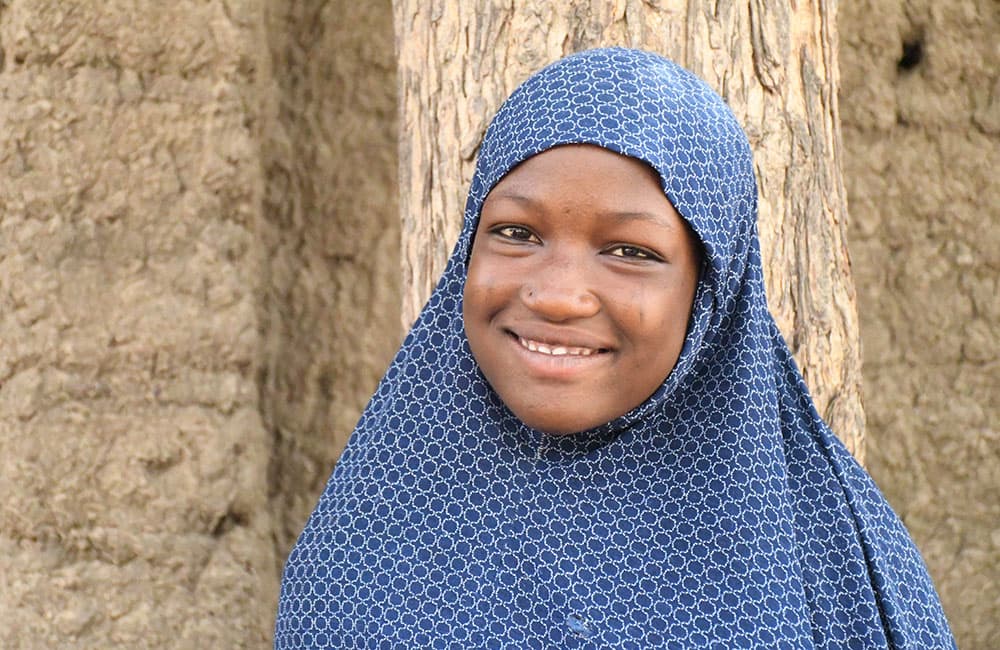
Haouaou is grateful school has kept her away from forced marriage.
Photo: Ali Adamou / Save the Children
That frightening possibility has generational impact, says Nora. “Getting girls to stay in school has not only an impact on them, but on their children too. Studies have shown when girls are educated even the nutrition level of their children is higher.”
“To really change a girl’s life, it’s important for girls to go up to the high school level. This is where they can get most of the benefits. At the end of primary school, you have the foundational skills – numeracy, literacy and critical thinking. But in terms of being able to get some return in terms of opportunity for jobs, or opening up a career path, it’s important to go to a higher level, ideally secondary education and beyond if possible.”
Making schools safe
Governments have a duty to ensure that every child is supported to return to school when it’s safe to do so – especially vulnerable and marginalised children – so they can return to learning, a sense of normality and they are protected from violence and abuse.
“We must ensure the safety and wellbeing of children and staff,” says Nora. “That includes things like disinfection procedures, support for handwashing facilities in schools, and awareness of social distancing protocols. But it also means looking out for children’s mental health and protection from forced marriage or child labour.”
“We will have to do more to increase demand for education among the poorest communities. Then, once they are in school, we’re not done yet. We will need to test what children have learnt and what they have missed out on. We have to support teachers to help these children catch up – whether that’s through additional classes, or radio school, or other things. And we will need to motivate the struggling learners so they will be engaged and they don’t give up.”
A child’s right to education does not end in an emergency. We must do what we can do protect their future.
*Names have been changed to protect the real identities of children and their families